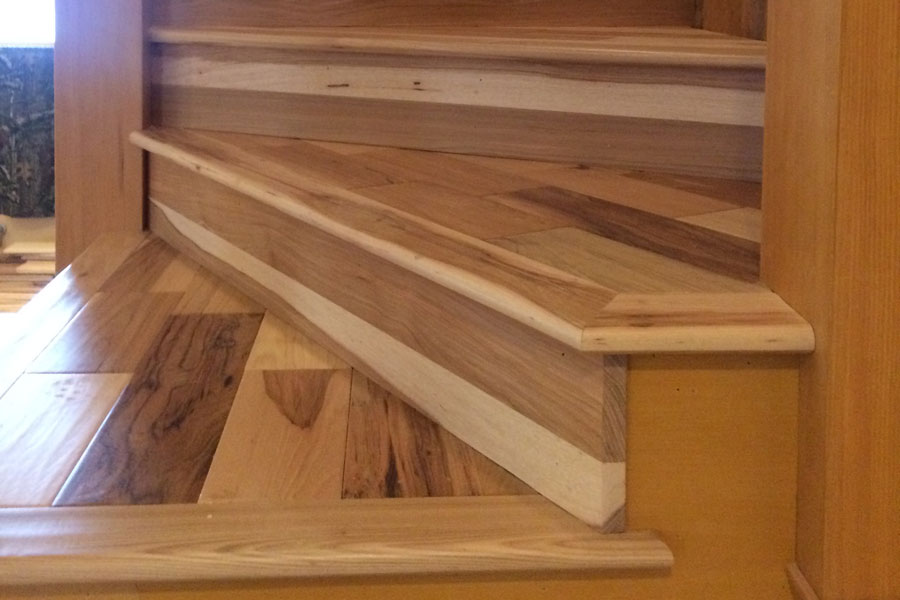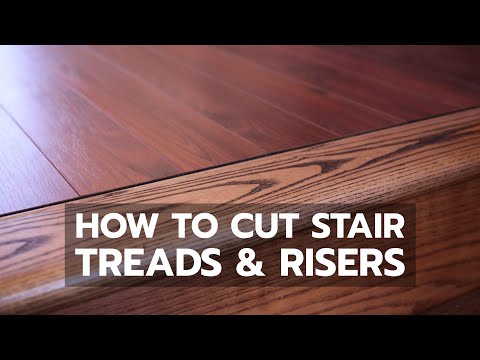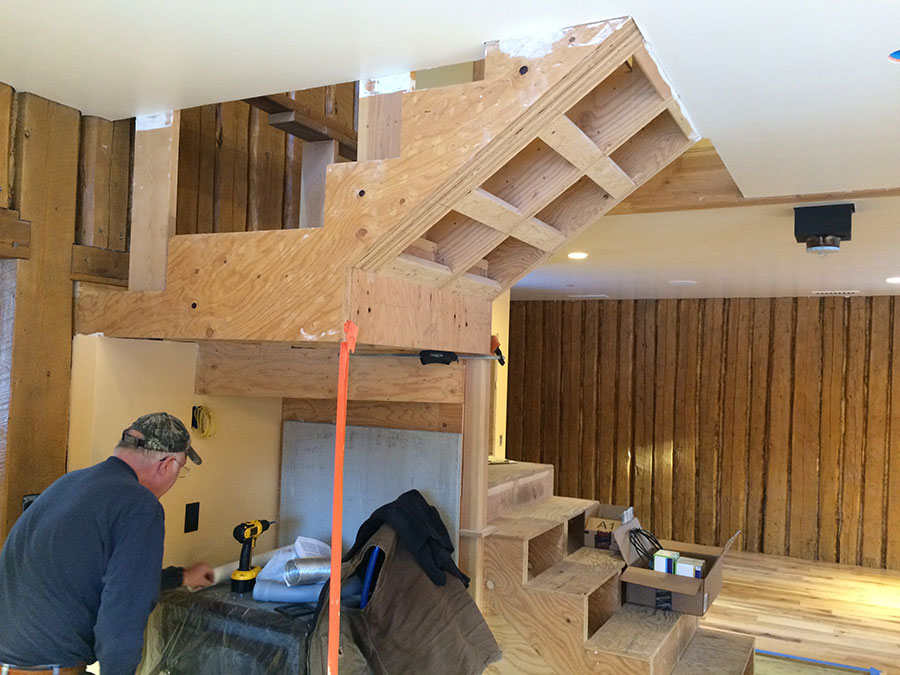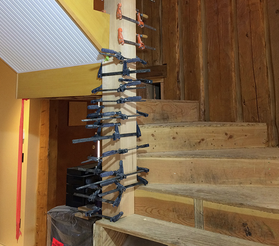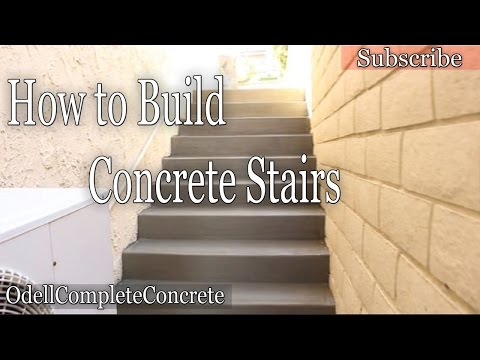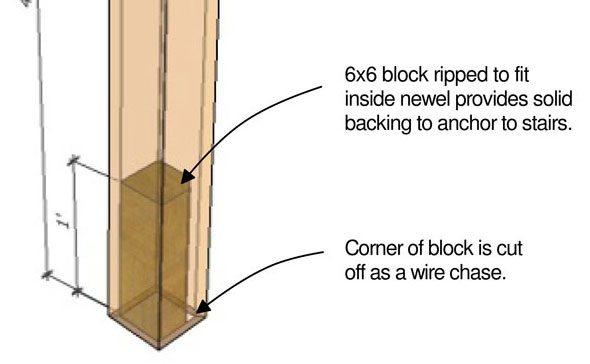Fitting finished stair parts that are too narrow and too deep
This is the fifth in the series on stair trim-out.
The treads for this staircase came from the same company that supplied the hardwood flooring. They were prefinished treads with a bull-nosed front edge and ends.
The bullnose ends were run long so they could be trimmed and mitered to return to the skirtboards as you can see below.
When the design changes after the parts are ordered, sometimes the parts don't fit
A problem arose because initially there was going to be 1/4-in wainscoting on the stair framing with no skirtboards. As you know from a previous post (and the picture below), there is indeed a skirtboard and the skirtboard is 3/4-in prefinished plywood.
So the treads arrived 1 inch short with pre-applied nosings. Thankfully, the nosing overhung the ends by 1-1/4 inches. This meant that I could rip 1/2 inch off the inside of the end pieces to make the tread fit over the skirt boards.
The remaining 3/4 inch overhang was plenty of reveal to look good against the skirt board.
Once this problem was resolved, I determined the length of the end nosings, cut them at a 45 degree angle, and glued on the 3/4 inch pieces that would return to the skirt boards.
Next came the other challenge: The treads were too deep
Normally, I would install all of the risers on the staircase first and butt the backs of the treads to them. I couldn't do that here because the treads were made 3/4 inch too wide. This would have left too much tread hanging over the front of the risers for safety.
If the nosings hadn't been pre-applied, ripping the treads would have been easy, but that wasn't an option here.
Instead, I ripped down the risers and set them on top of the treads. Starting at the bottom of the staircase, I installed the first riser and then fit and installed the tread above it, repeating this until they were all in place. This made the overhang 1 inch.
Several of the treads needed to be fit around the newel posts, so I carefully measured and laid out each cut where the treads would be notched around the posts.
Sometimes making a pattern out of heavy paper or cardboard is useful in these scribing situations.
The two flights of stairs are interrupted by a winder formed of six pie-shaped treads. For these I had strips of prefinished nosing that I cut and installed (after I had installed the riser below) and then installed strip flooring behind them.
Many of the cuts were of an extreme angle, so it took some fancy carpentry that probably shouldn't be illustrated in a construction publication ...
This section of the stairs took almost two days to complete due to the number of pieces and the way they needed to be cut and fit.
The homeowners liked the sharp contrast of the flooring, and asked me to match that look with the stairs wherever possible.
Once the winder was finished, the remaining treads and risers were completed in a couple of hours.
Going up and coming down.
And that about wraps up this stair trim-out project.
—Chris Whalen is owner of Black Mountain Company, a renovation, building, and woodworking company in Missoula, Montana. He is also a member of ProTradeCraft's technical advisory team.
